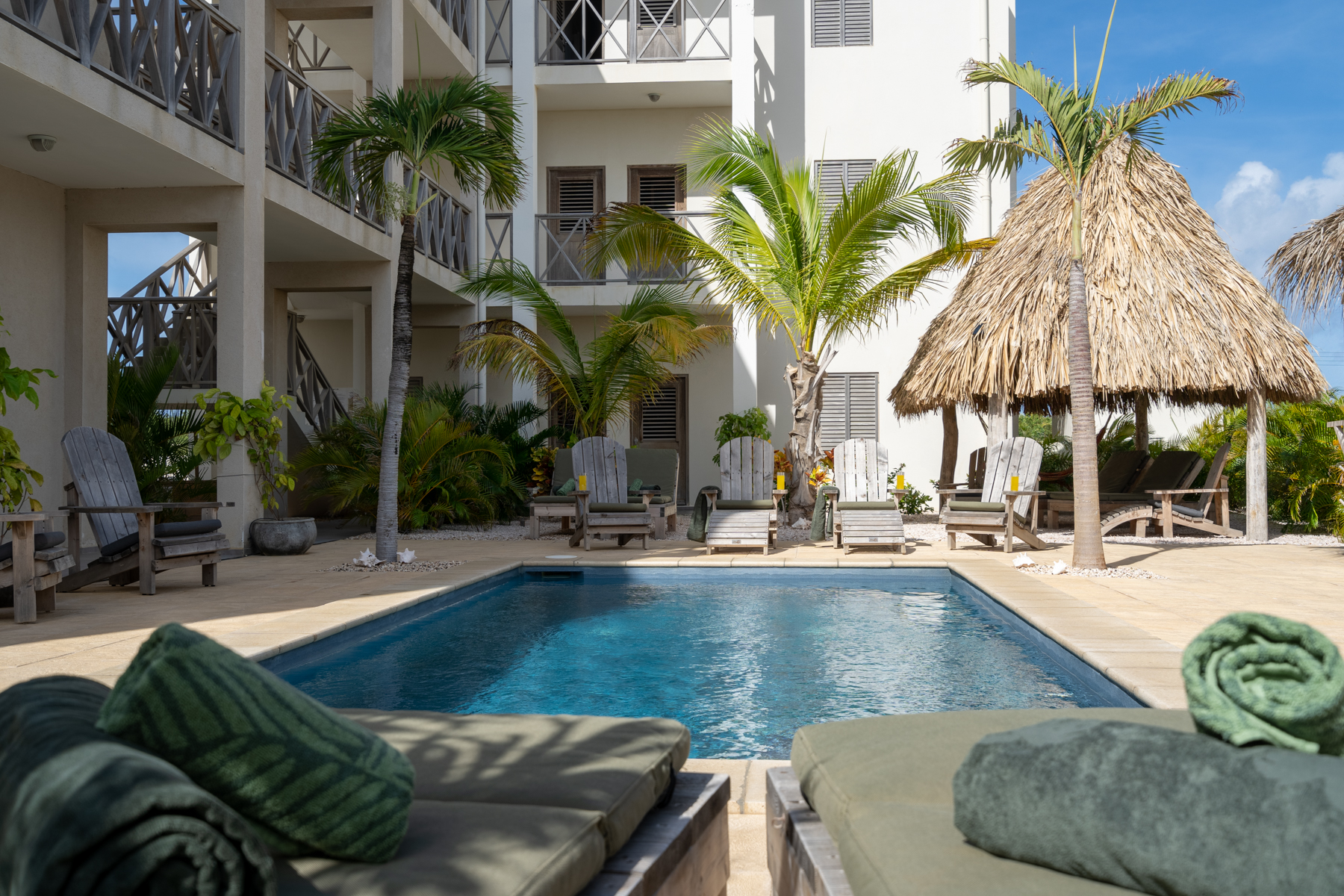World-class diving and snorkeling
Bonaire is considered one of the best diving destinations in the world. The entire island is surrounded by a protected marine park, with over 80 dive sites. The coral reefs are vibrant, well-preserved, and full of marine life like turtles, trunk-, angel- and parrotfish.
Meer informatie: over locaties, bedrijven benoemen en foto’s.
Parrotfish are among the most common and colorful inhabitants of Bonaire’s reefs. These fish play a crucial role in maintaining reef health by grazing on algae, which prevents the overgrowth that can smother corals.
Windsurfing and kitesurfing
The steady trade winds make Bonaire a hotspot for wind- and kitesurfing. Especially in places like Lac Bay (windsurfing) and Atlantis Beach (kitesurfing).
Salt Flats and Salt Harvesting
Bonaire has been producing salt for centuries, and the vast salt flats in the island’s southern region are both functional and visually stunning. Their vivid pink color, caused by microorganisms in the brine, creates a surreal landscape. Nearby, small white slave huts, once used by laborers during the colonial era, stand as somber historical reminders.
Meer informatie: foto’s
Flamingos
Bonaire is one of the few places in the world where flamingos breed in the wild. These elegant birds are a symbol of the island and are often spotted at the Pekelmeer salt flats as well as at Lake Goto, a serene inland lagoon surrounded by nature.
Protected Natural Areas
Bonaire is deeply committed to preserving its natural environment. Washington Slagbaai National Park, located in the island’s northwest, is a vast reserve featuring dramatic landscapes, diverse wildlife including flamingos and iguanas and dense cactus forests. The island also leads conservation efforts for sea turtles, coral reefs, and other marine ecosystems, making it a model for sustainable tourism in the Caribbean.

